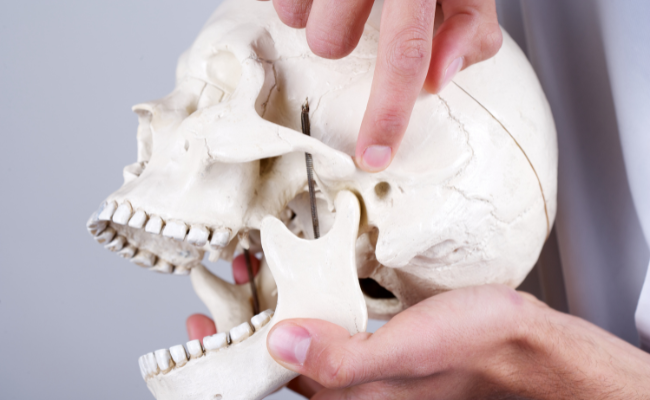How to Treat Temporomandibular Disorder?
- February 07, 2024
- No Comments

What is Temporomandibular Disorder (TMD)?
Temporomandibular Disorder (TMD) encompasses a range of conditions affecting the temporomandibular joint (TMJ), surrounding muscles, and ligaments. Symptoms include jaw pain, headaches, and difficulty opening and closing the mouth. TMD, often referred to as TMJ dysfunction, affects the joints connecting the lower jawbone to the skull, crucial for chewing and speaking. It's prevalent, with 5% to 12% of adults affected, more common in women and AFAB individuals, and typically occurs between ages 20 and 40.
Why is Treating Temporomandibular Disorder Important?
Treating Temporomandibular Disorder is essential for several reasons. Firstly, TMD can cause significant discomfort and pain, affecting a person's ability to eat, speak, and perform daily activities. Untreated TMD may lead to chronic pain, muscle tension, and decreased quality of life. Additionally, TMD symptoms can worsen over time if left untreated, leading to further complications such as joint degeneration and functional impairment.
How to Treat Temporomandibular Disorder?
- Medical Evaluation: The first step in treating TMD is to undergo a thorough medical evaluation by a healthcare professional, such as a dentist or oral and maxillofacial surgeon. The evaluation may include a comprehensive history review, physical examination, and diagnostic tests such as dental X-rays or MRI scans to assess the extent of jaw joint damage and identify contributing factors.
- Pain Management: Pain management strategies are often a key component of TMD treatment. Over-the-counter pain relievers such as ibuprofen or acetaminophen may help alleviate mild to moderate pain associated with TMD. In some cases, prescription medications such as muscle relaxants or tricyclic antidepressants may be prescribed to help manage pain and muscle tension.
- Physical Therapy: Physical therapy can play a significant role in treating TMD by addressing muscle imbalances, improving jaw mobility, and reducing pain. A skilled physical therapist can design a personalized exercise program tailored to the individual's specific needs, incorporating techniques such as manual therapy, stretching, and strengthening exercises to improve jaw function and reduce symptoms.
- Dental Treatments: Dental treatments may be recommended to address underlying factors contributing to TMD, such as malocclusion (misalignment of the teeth), bruxism (teeth grinding), or dental problems such as tooth decay or missing teeth. Treatments may include orthodontic appliances, dental crowns or bridges, or occlusal splints (night guards) to stabilize the jaw joint and prevent further damage.
- Stress Management: Stress and anxiety can exacerbate TMD symptoms by increasing muscle tension and jaw clenching. Stress management techniques such as relaxation exercises, deep breathing, meditation, and cognitive-behavioral therapy (CBT) can help reduce stress levels and alleviate TMD symptoms.
- Behavioral Modifications: Certain habits or behaviors, such as jaw clenching, teeth grinding, or nail biting, can contribute to TMD symptoms. Behavioral modifications such as avoiding hard or chewy foods, practicing good posture, and using relaxation techniques can help reduce strain on the jaw joint and muscles, promoting healing and symptom relief.
- Surgical Intervention: In severe cases of TMD that do not respond to conservative treatments, surgical intervention may be considered. Surgical procedures such as arthrocentesis, arthroscopy, or open joint surgery may be performed to repair or replace damaged joint structures, remove adhesions, or realign the jaw joint.
Treatment Solutions for Temporomandibular Disorder:
- Individualized Treatment Plans: Treatment for TMD should be tailored to the individual's specific symptoms, needs, and underlying causes. A multidisciplinary approach involving dentists, oral surgeons, physical therapists, and other healthcare professionals may be necessary to develop a comprehensive treatment plan that addresses all aspects of the disorder.
- Education and Self-management: Educating individuals about TMD, its causes, and treatment options can empower them to take an active role in managing their condition. Teaching self-management techniques such as stress reduction, jaw exercises, and behavioral modifications can help individuals effectively cope with TMD symptoms and prevent flare-ups.
- Regular Monitoring and Follow-up: Monitoring TMD symptoms and treatment progress through regular follow-up appointments with healthcare providers is essential for adjusting treatment plans as needed and ensuring optimal outcomes. Close communication between the patient and healthcare team allows for timely intervention and adjustments to treatment strategies based on individual response and progress.
Benefits of Treating Temporomandibular Disorder:
- Pain Relief: Effective treatment of TMD can provide significant pain relief, improving the individual's comfort and quality of life. By reducing jaw pain and muscle tension, individuals can eat, speak, and perform daily activities without discomfort or limitations.
- Improved Jaw Function: Treating TMD can improve jaw function and mobility, allowing individuals to open and close their mouths more comfortably and chew food without difficulty. Restoring normal jaw function promotes better oral health and overall well-being.
- Prevention of Complications: Early intervention and treatment of TMD can prevent complications such as joint degeneration, chronic pain, and functional impairment. By addressing underlying factors contributing to TMD, healthcare providers can help prevent further damage to the jaw joint and surrounding structures.
- Enhanced Quality of Life: By alleviating pain, improving jaw function, and preventing complications, treating TMD can significantly enhance the individual's quality of life. With proper treatment and management, individuals can enjoy improved oral health, reduced pain, and increased comfort in daily activities.
Comments (0)